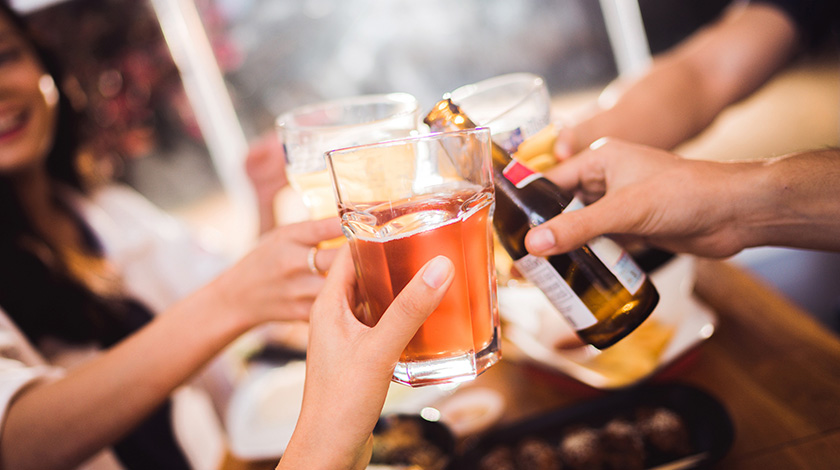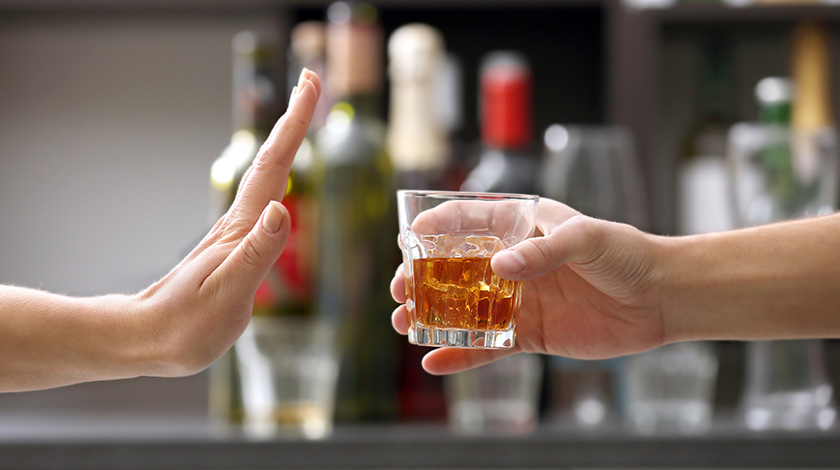When it’s time to sit back and relax, most people like the pleasure of enjoying a glass of wine or a bottle of beer. We all love a little alcohol every now and then. The problem is, most of us have no idea how much is too much.
Thin ice
There have been several studies proving that moderate consumption of any alcohol (and not just red wine, as people think) can reduce the risk of heart diseases.1 However, before you chug your drink down, keep in mind that it is only beneficial to your health in small amounts and anything more than that can lead to other diseases.
Excessive alcohol consumption may lead to heart diseases, liver diseases, strokes, and even cancer. And that’s not all — it can increase the chances of injury and accidents. It also has an adverse effect on your mental health and sleeping pattern.1-5 So if you’re planning to drink, have only a moderate amount, meaning 2-3 units per day for women and 3-4 units per day for men.3 A glass of wine is approximately 1.5-3 units and a pint of bitter is just a little above 2 units.2 Even if you stay within these limits, it’s always a good idea to have some drink-free days.
While the above amount of alcohol consumption is okay for most people, you shouldn’t drink at all if you’re pregnant or on prescription medicine. If you’re unsure, always check with your doctor to see how your prescribed drugs react to alcohol.
Binge drinking has become fashionable in recent years, but what exactly defines you as a binge drinker? That will be a male drinking more than 8 units a day or a female drinking more than 6 units a day.2 It’s considered a dangerous practice that leads to car accidents, hospitalization, and deaths in teens and young adults.7
The fat factor

Alcohol consumption is also harmful to your health by contributing to your body fat. People usually forget that alcohol is high in calories. Kicking back with a couple of beers could easily add 500 calories to your diet.6 Let’s look at the calorie counter below:
- White wine (250ml): 190 calories
- Large pint of beer: 250 calories
- Single measure of gin/vodka and tonic: 130 calories
- Single measure of cream liqueur: 100-175 calories
To reduce your alcohol calorie intake, you can drink light beers instead of regular ones and get single measures instead of double ones. When getting cocktails, go for low-calorie mixers and choose a fruit base rather than a creamy one.
We all react differently to alcohol. Besides gender, your height, weight and health condition are some of other major factors that determine how alcohol affects you. Always consult your doctor if you have experienced excessive alcohol consumption or have doubts concerning your drinking habit.
Resources
- Alcohol and heart disease. Drinkaware. Visited 18 April 2016.
- Statistics on Alcohol: England, 2015. Health and Social Care Information Centre. Published 25 June 2015.
- The risks of drinking too much. NHS Choices. Visited 18 April 2016.
- Alcohol and sleep. Drinkaware. Visited 18 April 2016.
- Alcohol and mental health. Drinkaware. Visited 18 April 2016.
- Calories in alcohol. Drinkaware. Visited 18 April 2016.
- Binge Drinking. Alcohol Rehab Guide. Visited 31 May 2017.

